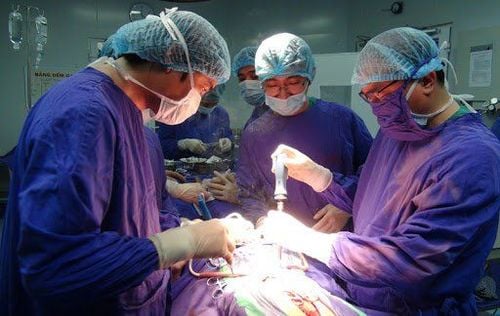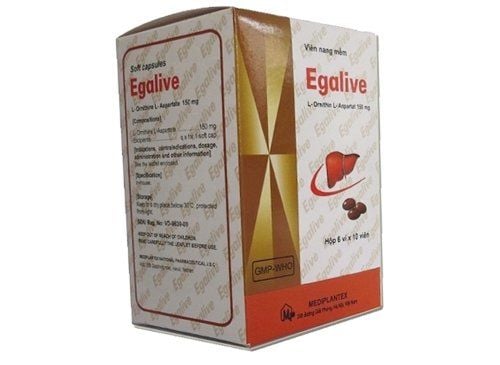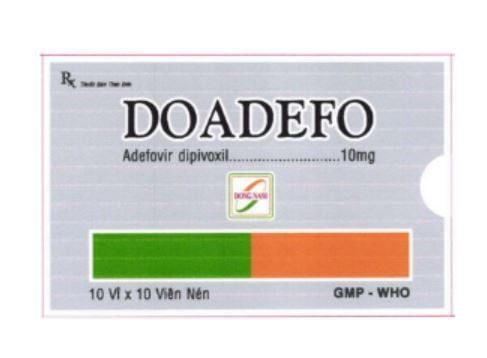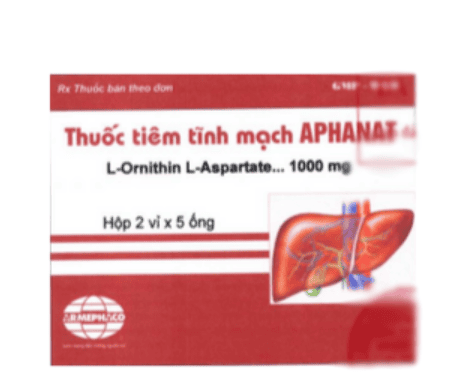This is an automatically translated article.
To treat gastrointestinal bleeding caused by cirrhosis, there are many methods of medical treatment, endoscopic, surgical surgery, and typically, creating an intrahepatic portal canal with TIPS method.
1. Overview of the TIPS . method
Normally, blood moves from the intestines and spleen through the portal vein to the liver. The liver in a normal, healthy state will filter blood cells and absorb nutrients from the intestines. The blood is filtered through the liver tissue and flows into the hepatic veins and back to the heart.
When the patient has liver problems, it will cause portal hypertension. Portal hypertension is one of the typical progression of cirrhosis. In severe cases, high pressure in the veins in the liver can reverse the flow of blood. Blood will have to be drawn through other routes causing varicose veins. High-pressure blood flow through the veins can rupture the veins of the esophagus and stomach and lead to gastrointestinal bleeding.
To treat gastrointestinal bleeding due to cirrhosis, there are many methods of medical treatment, endoscopic, surgical surgery and typically the intrahepatic portal opening by TIPS method.
TIPS (Transjugular intrahepatic portosystemic shunt) is a method of creating an intrahepatic portal through the right internal jugular vein, indicated for cases of gastrointestinal bleeding due to rupture of esophageal varices when internal measures are necessary. Department and endoscopy failed. TIPS is evaluated as an effective prophylactic treatment for complications of portal hypertension in cirrhosis.

Xơ gan lâu ngày dễ dẫn tới áp lực tĩnh mạch cửa
2. The process of performing a portal opening in the liver
Time to perform the technique: From 2 - 3 hours.
Performer: 01 radiologist (specializing in X-ray treatment or other imaging techniques)
Basic steps in performing TIPS include:
Patient is under general anesthesia body, fitted with a tube for breathing support. Pre-intervention assessment: Review and evaluate the morphology, anatomy of the portal vein, hepatic vein, the condition of the adjacent liver parenchyma as well as the comorbidities. Opening the way into the lumen: Using wire and a mesh-coated metal catheter (Shunt) are inserted into the hepatic vein. Create a passage through the liver tissue to the portal vein. Insert a bridge to keep the opening open, help regulate blood flow from the portal system straight into the vena cava, reducing portal hypertension. Check the portal - host circulation : Take and measure the portal pressure in the liver . Intravascular closure: routine compression of the internal jugular vein. At the end of surgery, the patient rests in bed for 8-10 hours. Do Doppler ultrasound to check the bridge after 1 day, 1 week, 1 month, 3 - 6 months.

Thực hiện kỹ thuật TIPS - thông cửa chủ trong gan
3. Monitoring and identifying hazards
Shunt catheters can be placed in about 90% of patients and most people make good progress after TIPS. However, TIPS is an important surgical procedure and in some cases (5-10%) the catheterization method is inappropriate and causes complications.
Some serious complications after an intrahepatic portocentesis may include:
Intra-abdominal bleeding can be life-threatening. Severe infections More advanced liver disease During the first few days, the postoperative mortality rate is 1% (1/100 patients die from TIPS). And the mortality rate in the first few months after surgery can be higher.
Before performing TIPS, clinicians will discuss possible risks and ensure that all patient and family questions and concerns are addressed. specifically answered.
Currently, at Vinmec International General Hospital, a system of standard medical equipment has been deployed and put into service for examination, imaging and treatment, including cirrhosis and other diseases of the liver. liver. All examination and treatment procedures at Vinmec are carried out methodically and according to standard procedures by a team of highly qualified medical professionals, thus providing optimal treatment results for customers..
If you have a need for medical examination by modern and highly effective methods at Vinmec, please register here.













